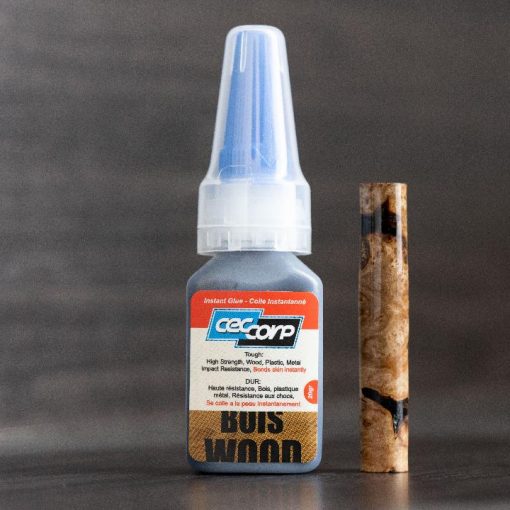Have you ever bought multiple pen blanks of the same wood and noticed varying colour, grain and density? This is probably because they came from different parts of the tree. Sapwood refers to the newer, outermost rings of a tree while heartwood is the older center. Then there is the pith, burl and grain. These things aren’t just about looks; each of them will behave differently on your lathe while woodturning.
Understanding wood anatomy for pen making
Sapwood: Sapwood, which is right under the bark, is the living part of the tree that transports sap and water. It’s softer than heartwood and is great for decorative wood turned projects. Sapwood from soft species like white pine may not be suitable for high-use items like knives, but hard woods like cherry and walnut are strong enough for penmaking and more.
Heartwood: The darker center of a tree trunk is the heartwood, which is considered “dead” because it no longer moves water to the leaves. However, it’s essential for a tree’s structure and strength and contains decay-resistant tannins and minerals. As new layers of sapwood form, older ones transition into heartwood. Heartwood is excellent for most woodturning projects, especially those requiring durability like kitchenware and tool handles.
Pith: The pith, or juvenile wood, is at the very core of the tree, surrounded by the heartwood. The pith is usually removed or avoided by woodturners because of its spongey texture and tendency to crack. However, it can be intentionally included as an artistic accent in special pieces.

Burl: Burl is a whole other ballgame, and a favourite in woodturning due to its distinctive markings and texture, which are a result of environmental stressors like viruses, fungi, and extreme conditions. Its striking appearance makes it perfect for crafting custom pens, wooden jewelry, and other handmade gifts. Typically located near the tree’s base or on branches, burl offers unique aesthetics for lathe projects. However, work carefully when turning burl pen blanks because you might come across voids, fissures or unexpected variations in hardness. These are not considered defects in the wood, but often create beautiful swirling patterns. Knots in the wood can give the opportunity to create stunning inlay with opal, mother of pearl or other materials.
Grain: The concentric rings in a tree trunk are what give wood its grain. These rings show the tree’s age and what conditions it has endured. The light colored rings are spring and summer growth, while the dark rings are late summer and fall growth. Zebrawood and Olive, for example, have a high-contrast grain that makes especially unique wood turned products that stand out.
Combine the best wood for turning
Sapwood, heartwood, burl and grain give personality to your handmade pens, bowls and other turned goods. When selecting wood for your lathe projects try experimenting with all the different things a tree has to offer to create a stunning, natural masterpiece. To get started mixing and matching check out our Facebook page, where we hold a weekly auction for a great big box of goodies from William Wood Write. See you there!








